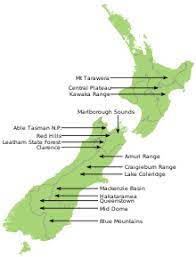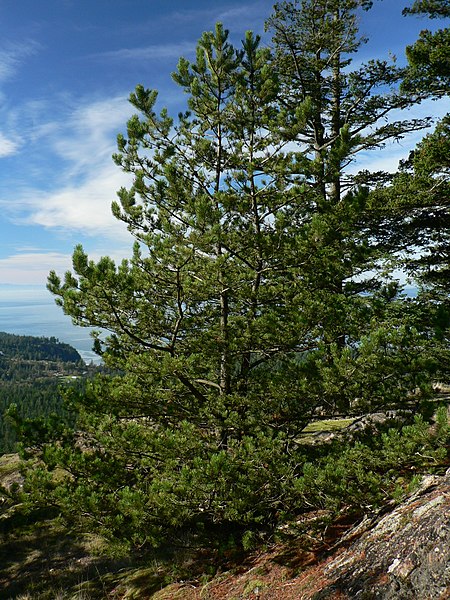
As those of us who want to “do something” to counter bioinvasions struggle to mobilize both the resources and the political will necessary, I rejoice that more studies are examining what factors affect “social license” [= public approva] for such programs. One such study was recently published in New Zealand — Mason et al. (full citation at the end of the blog). New Zealand enjoys a greater appreciation of the uniqueness of its biology and awareness of invasive species’ impacts than the United States. However, their findings might provide useful guidance in the US and elsewhere.
Mason et al. sought to understand motivations of, and constraints on, those local groups responsible for controlling the spread of non-native conifers into New Zealand’s remnant native ecosystems. Non-forest ecosystems across much of the country are at risk of rapidly transforming into exotic conifer forests. For these reasons, authorities are pressing for timely removal of existing seed sources, that is, mature non-native conifer trees of several species. The blog I posted earlier apparently describes effects of conifer invasions in lowland ecosystems, whereas the Programme described here is focused on high-elevation systems.
The eradication effort in the study is the National Wilding Conifer Control Programme, establishedin 2016. A large increase in funding provided during the COVID-19 lockdown made it practical to try to eradicate seed sources from large swathes of vulnerable land. The Programme coordinates control efforts across the country, working across property and land-tenure boundaries. Landowners are expected to cover 20% of the cost of removing conifers from their land. Since removing all seed sources of high-risk conifer species from the landscape is key to achieving long-term goals, success is unlikely if significant seed sources are allowed to persist.
Mason et al. combined workshops, questionnaires, and site visits to gather data on particular aspects of this Programme. They found that social resistance, rather than lack of scientific knowledge, was often the main barrier to success in managing widespread invasive species. The authors do not address whether the fact that only 30 people provided information for their study might undermine the reliability of their findings.

The authors suggest that the main benefit of scientific information might be to increase stakeholders’ support for management interventions — rather than to guide manager’ decisions about which strategies to pursue. To support social license, invasive species research programs might need to focus not only on cost-effective control technologies and strategies, but – perhaps especially — the benefits (both tangible and intangible) of invasive species control for society.
Mason et al. found that people were motivated to combat conifer invasions by impacts with direct influence on humans or human activities (e.g., reduced water yield, damage to infrastructure from wildfires, reduced tourist activities due to landscape transformation) and also by impacts affect ecosystems (e.g., impacts on biodiversity, aquatic ecosystems and landscapes).
People objected to control or eradication programs primarily because of social concerns. These included the unwillingness of landowners to participate and regulatory frameworks that had perverse incentives.
Mason et al. called for greater efforts by scientists to persuade stakeholders[p1] to allow removal of “wilding” conifers from private land and development of more appropriate regulations. They found that forecasting models were particularly effective in persuading people to support these efforts. It seems to me that outreach teams might need “translators” to convert scientists’ findings to information that would be more useful by stakeholders.
The authors concede that the “wilding conifer” situation has unique attributes. First, invading conifers present a stark, easily seen difference between native and invaded ecosystems. Second, some – but not all—stakeholders appreciate the uniqueness of New Zealand’s biomes. Third, the impacts of conifer invasion are sufficiently well known that they can be described succinctly and accurately.
Do these unique attributes undercut the relevance of this study to North America? It is still true that ongoing support from local stakeholders (including landowners and community groups) influences the effectiveness or profitability of managing invasive species. .It is also true that groups’ varying values affect willingness to support the activities.
Mason et al. think through the issue of stakeholders’ conflicting perspectives on the value of particular invasive species and the values threatened by that invader. These can include ethical or safety concerns around management methods, particularly regarding toxins and genetic modification. Economoic costs are also a factor – especially if the landowner must pay all or some of them.
I find it interesting that the government simultaneously funded a 5-year research program to study various issues regarding the spread, ecosystem impacts, and control of wilding conifers. The result is the Mason et al. study discussed here. I wish the U.S. funded independent analyses of its invasive species programs!

More Details, Policy Suggestions
Workshop attendees unanimously identified landscape impacts as a reason for controlling wilding conifers. This primarily concerned the loss of New Zealand’s visual heritage or cultural identity rather than loss of native species’ habitats. When the landowner was raised in Europe, these cultural or heritage values sometimes had the opposite effect, since they see conifer forests as important components of “natural” landscapes.
Currently, landowner funding and permission is required for conifer removal. Some individual landowners want to establish new forestry plantings. Some resist removal of existing forestry plantations (which provide income) and shelter belts (which provide shelter for livestock in high country landscapes). Some landowners were unwilling to pay their 20% of removal costs. Or they objected to certain conifer control methods—particularly helicopter spraying of herbicides. New Zealand’s regulatory process also requires years of negotiating to remove standing trees – further delaying any action. In theory, landowners who resist removal could be prosecuted under the Biosecurity Act. However, this approach has never been tried for removing wilding conifers.
Mason et al. suggested several changes in policy to overcome some of these barriers.
First, forestry consultants can “game” the wilding conifer “risk calculator” to obtain government approval to establish conifer plantations in high-risk environments. The authors suggest that authorities create a “liability calculator.” Under this system, landowners wishing to retain conifers on their land for whatever reason would be liable for any subsequent containment costs. However, developing such a tool requires more finely-scaled models of conifer spread.
Second, given the high costs of combatting invading conifers if seed sources are allowed to persist, they suggested that it might be more cost-effective for the control program to pay for plantation removal under New Zealand’s Emissions Trading Scheme.
Given the overwhelmingly social and regulatory nature of barriers to success, the primary role for scientific information is providing assessments of outcomes in the absence of wilding conifer control. Preferred messages were return-on-investment estimates and forecasts of ecosystem impacts, particularly relating to biodiversity loss, water yield reduction, and wildfire hazard. Forecasts were key to demonstrating that management interventions reduced future control costs and avoided environmental impacts which large sections of the community value (i.e. biodiversity loss, reduction in water yield and agricultural productivity, increased wildfire risks). Practitioners felt that forecasting models might also channel research toward areas of high uncertainty. Mason et al. recognize the difficulties presented by inherent complexity of ecological systems. However, they think “good practice” guidelines on forecasting are emerging.
The authors find that information content and presentation need to be tailored to the various audiences – most of whom lack experience in interpreting data from environmental forecasting models. They suggest that outreach materials focus on clear illustration of the tangible and intangible benefits of wilding conifer management rather than detailed explorations of scenarios. Participants suggested ways to improve the web tool to make it more accessible to a non-expert audience.
Mason et al. mention aspects that require balancing, but don’t suggest criteria for making these choices. They say it is important to include all relevant stakeholders in invasive species management governance bodies. The absence of stakeholders with positive attitudes to wilding conifer invasions led to unanticipated external social resistance to the Programme. They recognize that including stakeholders with conflicting interests might obstruct the decision-making process. Also, in areas where there has been success in containing conifers’ spread, people can’t see invading trees, so they don’t recognize the problem. They also note that existing data do not adequately recognize risks of spread from deliberately planted seed sources such as shelter-belts, plantations and amenity plantings. The authors do not discuss how to integrate these data into analyses and public outreach.
Finally, Mason et al. recognize that many other factors strongly influence stakeholders’ willingness to support invasive species control programs, especially the level of trust and strength of relationships between bioinvasion program staff and stakeholders.
Also, they suggest topics for future research: assessing how well forecasting models are integrated with communications with stakeholders; how qualitative and quantitative research methods in different fields might support one another; and empirical tests to measure the relative effects on social license of a) involving stakeholders in developing models, b) using forecasts to assess the consequences of different management decisions and, c) the usefulness of different methods for incorporating scientific information in stakeholder engagement.
SOURCE
Mason, N.W.H., Kirk, N.A., Price, R.J. et al. Science for social license to arrest an ecosystem-transforming invasion. Biol Invasions 25, 873–888 (2023). https://doi.org/10.1007/s10530-022-02953-w
see also https://www.doc.govt.nz/nature/pests-and-threats/weeds/common-weeds/wilding-conifers/
Posted by Faith Campbell
What do YOU think about the role “social license” plays in US invasive species programs? We welcome comments that supplement or correct factual information, suggest new approaches, or promote thoughtful consideration. We post comments that disagree with us — but not those we judge to be not civil or inflammatory.
For a detailed discussion of the policies and practices that have allowed these pests to enter and spread – and that do not promote effective restoration strategies – review the Fading Forests report at http://treeimprovement.utk.edu/FadingForests.htm
or